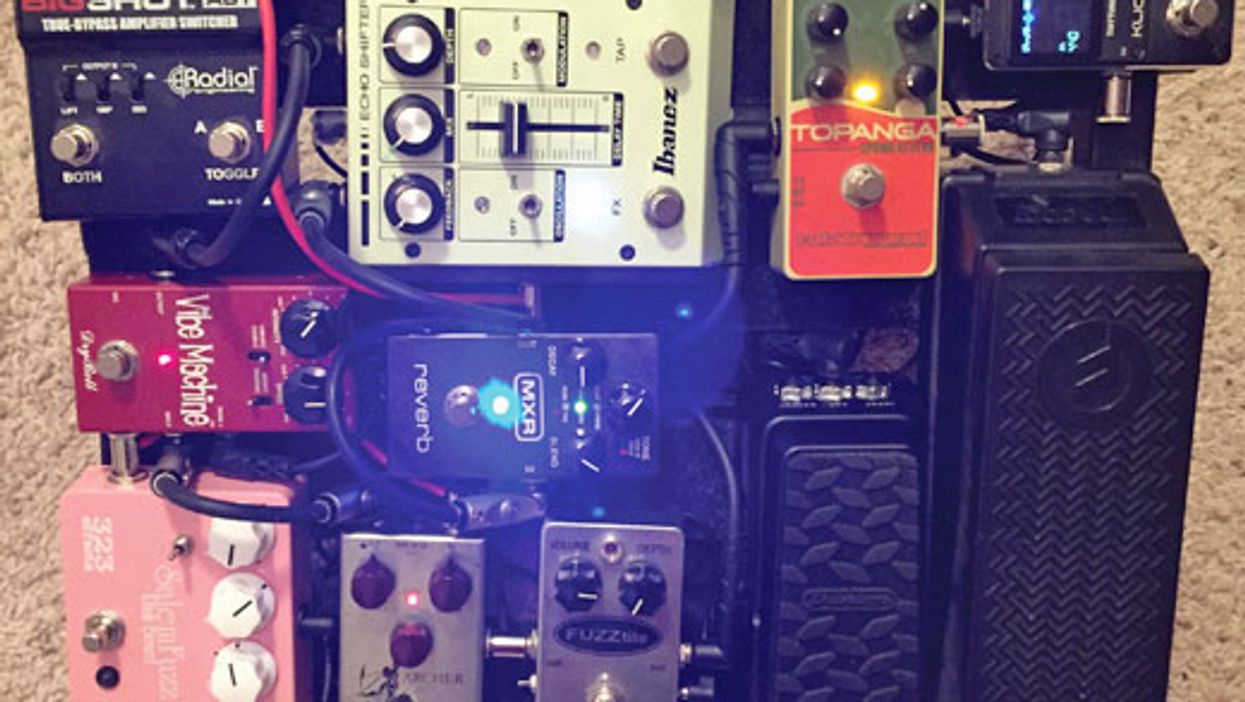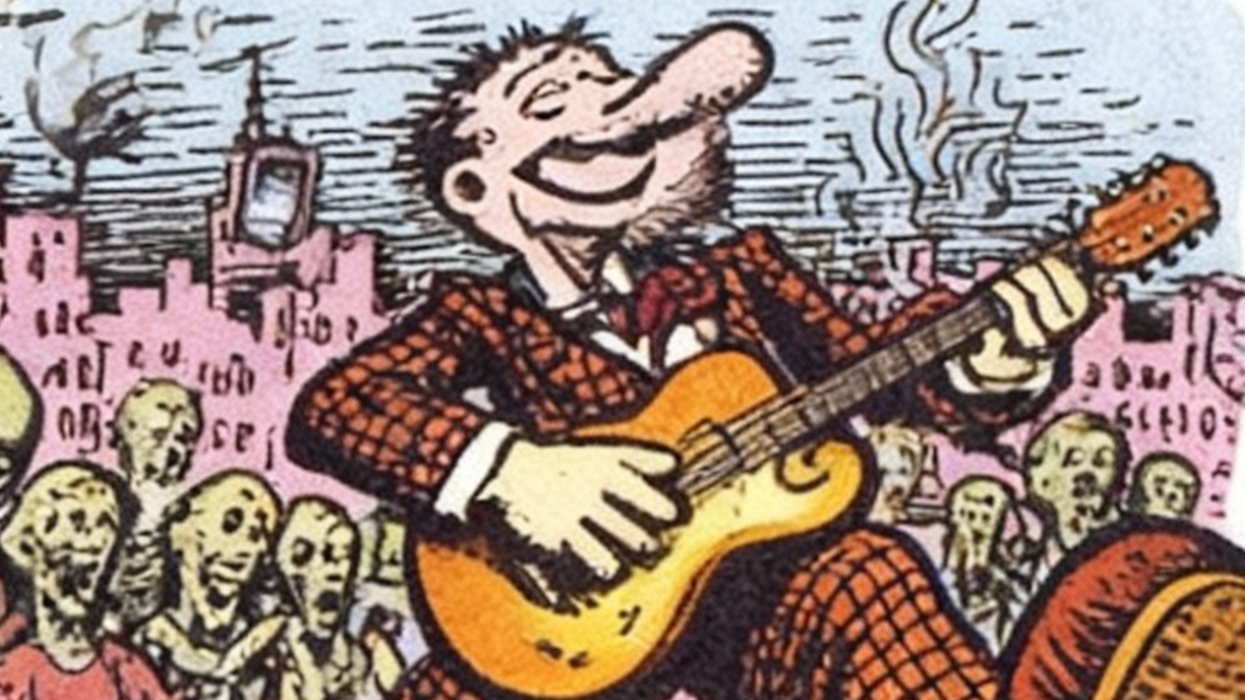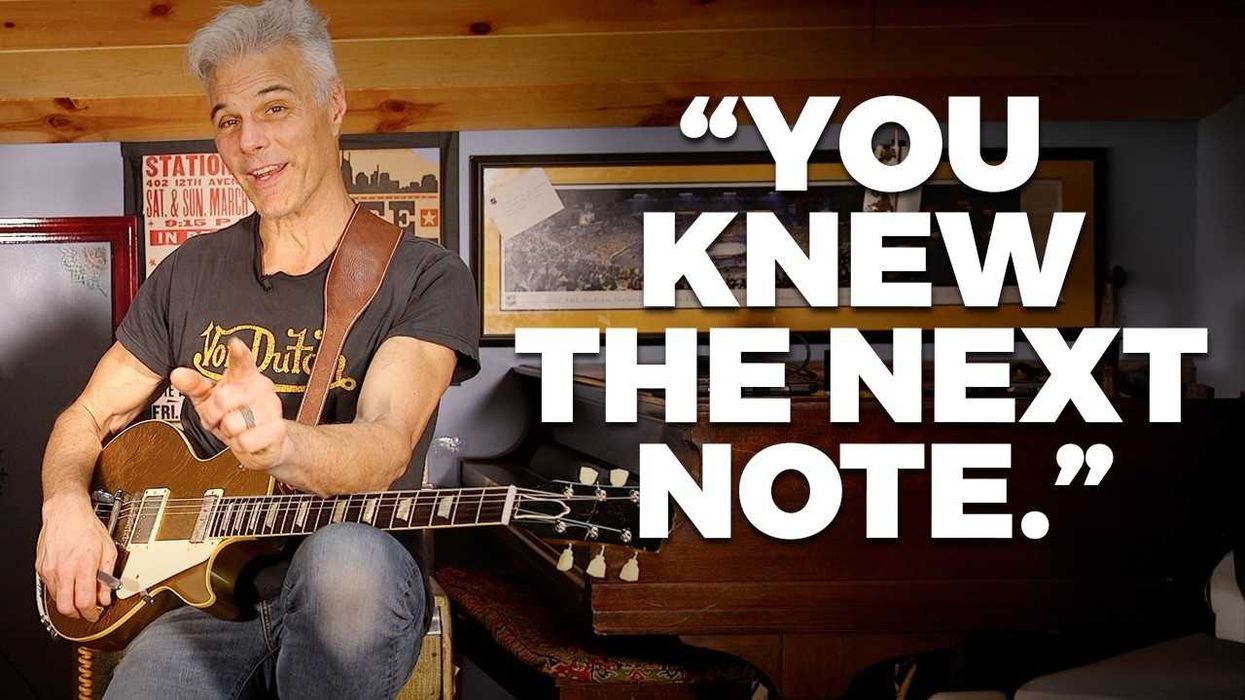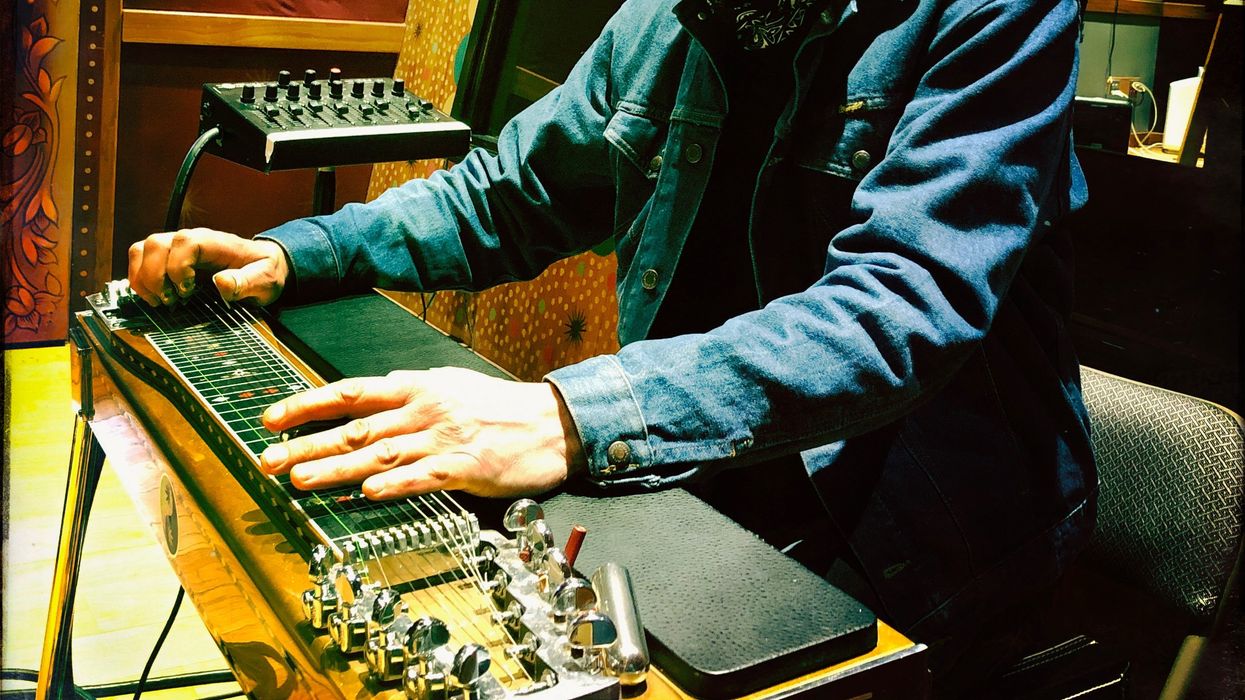Like many of you, I've long been a big reverb fan. It's gone way past mere love. Many would call me a sorry-ass junkie. My take? The naysayers don't know what they're missing. They also don't realize how much of an art and science it is to achieve unique ambience bliss—it's beyond just cranking your amp 'verb or throwing a cool-ass pedal at the end of your board.
My obsession started innocently enough. Honestly, considering how divine a thing reverb is, I'm kinda shocked how late it was in my 30-plus-year guitar affair before I really let go and unabashedly gloried in wicked washes.
Considering my formative guitar years—as well as the truly fantastic reverb renaissance we've seen of late—I suppose it should be no surprise it took me till the last decade to go gonzo with it: In the '80s I was almost mentorless with regard to guitar gear, unwittingly corrupted by the glut of cheap digital devices capable of squeezing out multiple effects simultaneously. Sure, there were a lot of options in my multi-effect rack unit of yore, but the state of digital at the time also meant they sounded pretty cold, stale, and one-dimensional.
The first time I got googly-eyed from first-hand reverb ecstasy was in college, when I bought a Fender '65 Twin Reverb reissue. The classic, tube-driven spring sound just felt right. Amps and effects came and went over the ensuing years as my horizons broadened and deepened, but the next big reverb leap didn't come till the 2010 release of the Strymon BlueSky Reverberator—a pedal that blew minds all over guitardom and singlehandedly spurred a new spacey-reverb-stomp movement.
For me, the need to go interstellar with the effect isn't a character flaw or a sonic weakness I have neither the desire nor the will to curtail. I front a guitar-and-drums duo where I'm the only person filling the gaping chasm between 20 Hz and 20 kHz. All I've got to do it with is a baritone 6-string, my voice, and the occasional electric-piano or Mellotron-ish keyboard foray. This requires a careful songwriting approach, one where bass frequencies are never left out too long, as well as studious tone recipes—especially since my keyboard and guitar go through the same pedals and amps. Carefully controlled storm clouds of reverb go a loooooong way toward filling the space.
Although the BlueSky changed my world, I spent years trying to figure out how to cross its cavernous room sounds with a vintage vibe. I ran it in tandem with the moderately washy spring tank in my Goodsell Valpreaux (my other amp, a Jaguar HC50, is reverbless), and it sounded pretty good. But the organic vibe I yearned for still wasn't quite there.
I also needed to be able to quickly, easily, and seamlessly control the amount of reverb without switching sounds entirely. I tried a few different pedals, some on their own, some in series with a Catalinbread Topanga—a stomp that does a surprisingly great job emulating the old Fender outboard units. But nothing quite came together in all the ways I hoped.
For the last couple of years I've been happy with the massive washes availed by the “epic" mode in the recent MXR Reverb—a reasonably sized, simple-to-use stomp with expression-pedal controllability. But I've still struggled with how bright and distracting the long trails can sound with my bari Jazzblaster. I tried putting the Topanga after the MXR—the last pedal on my board—but it still wasn't happening. Then I had a flashback to a column I wrote after interviewing Raveonettes guitarist Sune Rose Wagner a few years back. I remembered that he puts his delay and both of his reverb pedals at the beginning of his signal chain. But I didn't want to completely alter my sound—I just needed to tame the MXR's high-end sheen without affecting decay too much. So I figured what the hell, I'll try putting the Topanga's springy sound up front, too.
I'd previously thought such an arrangement would make my guitar sound too mushy and diffuse, but guess what? This “reverb sandwich"—the Topanga at the front of the board, and the MXR at the end (with a boost pedal, a fuzz, a vibrato, and a delay in between)—finally did the trick, ending a years-long quest to combine the best of old and new reverb sounds. (And yes, I still leave the Valpreaux's reverb cranked, too.)
Soon after this discovery, I had yet another epiphany while reviewing a Fuzz Face-style pedal. Placed in the middle of the sammich, the fuzz was transformed into something I'd use a lot more than I would had that top slice of “bread" (the Topanga) not been there. I immediately busted out a similarly voiced old fuzz I hadn't used in a while and welcomed it back to that spot on the board.
The moral of the story? 1) Rules about pedal placement are utter bullshit. You're ignoring worlds of tonal possibilities by following the norm. Try weird combos—you might stumble onto a signature sound. 2) If you've been on a similar hunt for a simple way to get massive, enveloping washes steeped in the warm tones of yesteryear, I highly recommend putting together your own reverb sammich and seeing if it works for you. I'm kicking myself for taking so long to try it out…. PG


















